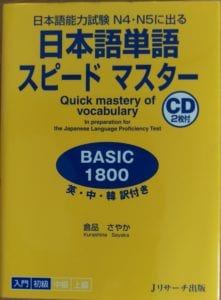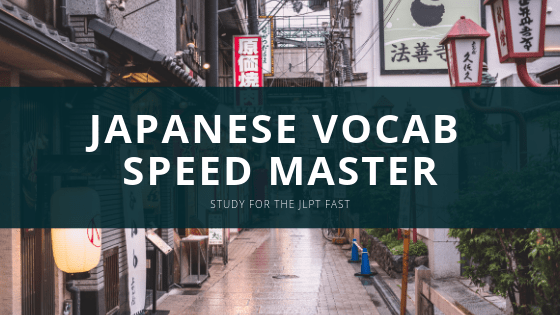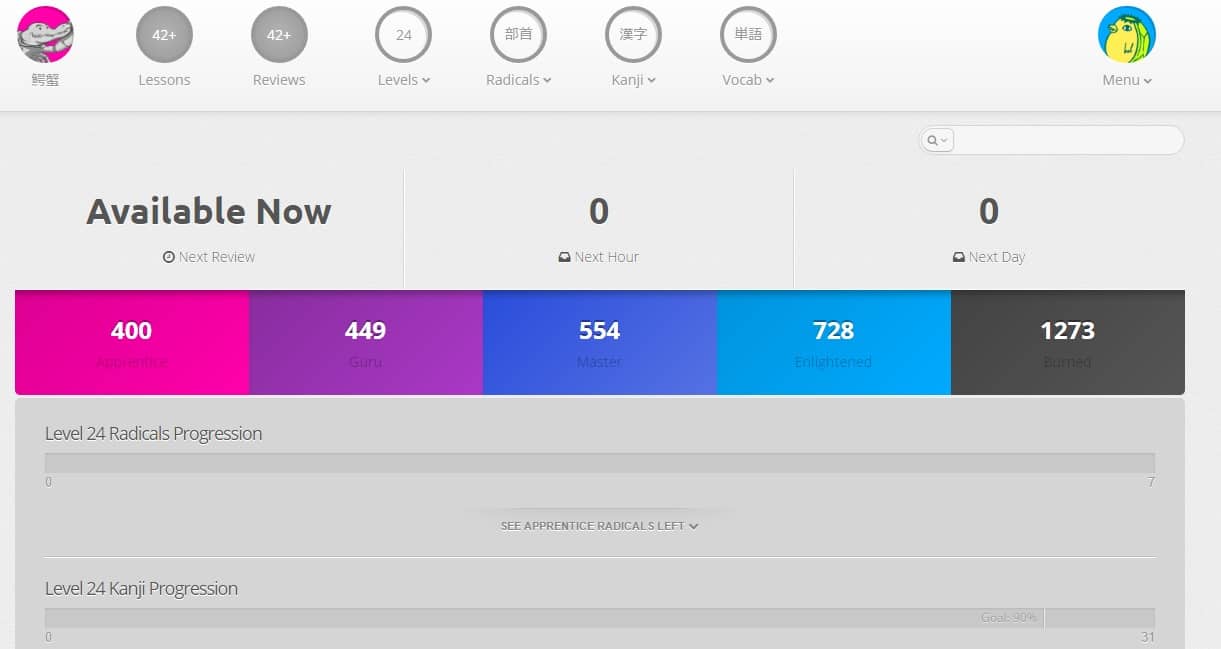One of the very best ways you’ll learn Japanese vocabulary is through the memory science learning app, WaniKani. However, it’s always a good idea to supplement and have different methods of learning to better cement what your brain is processing.
The 日本語単語スピードマスター which directly translates as “Japanese Vocabulary Speed Master” or as they state “Quick Mastery of Vocabulary” is by the same learning organization that brought Speak Japanese, my absolute favorite phrase books for once you’ve moved on from Lonely Planet.
Don’t worry that this series won’t keep up, there are four levels from beginning to advanced.
Disclosure: Kristenabroad.com is a participant in the Amazon Services LLC Associates Program, an affiliate advertising program in which I may earn a small commission by linking to Amazon.com and affiliated sites. The price to you is not affected!
Japanese Language Proficiency Test (JLPT)
If you are looking to take the Japanese Language Proficiency Test (JLPT), the different levels of this series focuses on the vocabulary you can expect to see on the exams. N5 is the lowest level, reaching to N1 as the highest.
It’s nice to have it split that way for test taking purposes but it also works you through the language at a good pace for understanding.
Quick Mastery of Japanese Vocabulary
Basic 1800 is for the N4/N5 level student and of course, a good basis for everyone learning the language. Standard 2400 is written with the N3 student in mind. Intermediate 2500 is for N2. You see where this is going, Advanced 2800 is for N1.

All come with CDs, 2 in this case, so that you can hear a native speaker for each of the words. The books are broken down into units which each cover a different topic to allow you to learn the words efficiently as like things are matched together.
Each word or set of words has a example sentence to go with it. There are cultural antidotes where necessary to help you understand how the word is used. Each “Unit” starts out with basics like numbers and counting and move further into hobbies and daily life as well as describing things and places. The building blocks for everything you need to speak Japanese.
What’s with the Red Plastic Sheets?
The book is translated in English, Chinese AND Korean but the other two languages don’t deter from the English translations. There is a version that’s translated into Thai, Vietnamese and Indonesian so make sure you get the correct one if you decide to purchase this series of Japanese language books.
So what’s the deal with the red plastic sheets that they books come with? The translations are written in red ink. This is brilliant and you see Japanese school children with books on the train all the time that are set up this way.

This should be a thing with all textbooks. It really helps you zip through the sheets and not “cheat” on knowing. Each entry has a check block to keep track of when you know it. The example sentences are ALSO in red in for the translations. I love this book.
Tips for studying Japanese vocabulary
After studying Japanese for many years now, there’s a few tricks that I’ve learned that helps with retention. Hopefully you can put them to use as well.
- Study every day. No excuses, the repetition helps.
- Watch programming in Japanese and try to ignore the subtitles or turn them off. Or something I like doing, critique the translators work. I love watching Japanese documentaries, shows or just some new anime (Sailor Moon makes that super easy as I know the story by heart).
- Label items around your house with their Japanese names!
- While out in town, try and call out different words in Japanese in your head.
- Speak, speak, speak. Try and say things in Japanese as much as possible.
What’s your favorite way to learn vocabulary?
Like this article? Pin it for later


